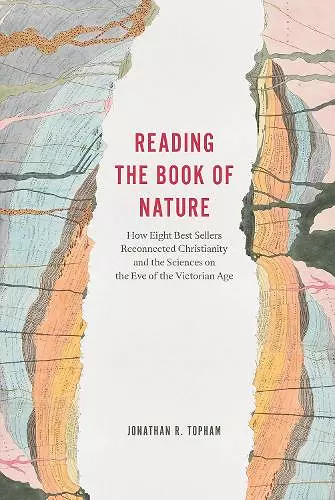Reading the Book of Nature
How Eight Best Sellers Reconnected Christianity and the Sciences on the Eve of the Victorian Age
Format:Hardback
Publisher:The University of Chicago Press
Published:10th Jan '23
Should be back in stock very soon

A powerful reimagining of the world in which a young Charles Darwin developed his theory of evolution.
When Charles Darwin returned to Britain from the Beagle voyage in 1836, the most talked-about scientific books of the day were the Bridgewater Treatises. This series of eight works was funded by a bequest of the last Earl of Bridgewater and written by leading men of science appointed by the president of the Royal Society to explore "the Power, Wisdom, and Goodness of God, as manifested in the Creation." Securing public attention beyond all expectations, the series offered Darwin’s generation a range of approaches to one of the great questions of the age: how to incorporate the newly emerging disciplinary sciences into Britain’s overwhelmingly Christian culture.
Drawing on a wealth of archival and published sources, including many unexplored by historians, Jonathan R. Topham examines how and to what extent the series contributed to a sense of congruence between Christianity and the sciences in the generation before the fabled Victorian conflict between science and religion. Building on the distinctive insights of book history and paying close attention to the production, circulation, and use of the books, Topham offers new perspectives on early Victorian science and the subject of science and religion as a whole.
“Topham approaches his subject through the interdisciplinary prism of book history, offering us a rich—and unprecedented—cultural history of the authorship, publication, and readers of the Bridgewater Treatises. . . . By employing a book history approach, Topham has succeeded in providing fresh insights into the role of print culture in mediating the relationship between religion and science on the eve of the Victorian era. Reading the Book of Nature will become a standard reference work for those interested in understanding the transformations in writing, publishing, and reading in nineteenth-century science.” * History: Reviews of New Books *
“Topham’s massive but unfailingly readable account of the series combines almost surreal erudition with a gift for clarity and a keen eye for homely detail.” * First Things *
“Reading the Book of Nature is a remarkable achievement, the latest demonstration of the value of situating the history of science in the material culture of print.” * Journal of Religion *
“In setting the history of the Bridgewaters as his subject, Topham makes an important contribution to the histories of science, the book, and religion in Victorian Britain. . . . [A] deeply researched, thoroughgoing historical study.” * Isis *
“. . . one of the best works on book history to be published in recent years, and its interpretation of the historical interface between religious devotion and scientific information is refreshing and original. Topham is to be congratulated for writing an outstanding contribution to nineteenth-century British cultural history.” * Journal of Modern History *
“Reading the Book of Nature takes its rightful place amidst the extraordinary work of historians of nineteenth-century British science over the last thirty years, and more specifically amidst the work of historians like Jim Secord, Bernard Lightman, Aileen Fyfe, and the team at the Science in the Nineteenth-Century Periodical project, of which Topham was a key member, examining the nexus of Victorian popular science and print culture over the last twenty years.” * Victorian Studies *
"This is a remarkable book, based on a lifetime's immersion in early nineteenth-century science, theology, and publishing culture. It offers a new way of thinking about the relations between religion and science, grounding this in material practices of reading, church-going, and daily devotion. There are wonderful discussions here of individual readers and the ways in which the Bridgewaters were used for everything from mourning recently deceased relatives to classifying museum collections. Its knowledge of the primary sources is unparalleled, and it is thorough, fair, and judicious in referencing the extensive literature on the topic. A vitally important book on a major subject." -- James A. Secord, author of Visions of Science: Books and Readers at the Dawn of the Victorian Age
"This is not only a definitive study of this important series of books, but it also offers perceptive insights into questions about the historical relations between science and religion. It sheds considerable light on publishing and reading practices and, more generally, on the social and intellectual culture of mid-nineteenth-century Britain. The research is thorough and painstaking, the writing is lively and interesting, and the arguments persuasive. Topham provides an account of the Bridgewater Treatises that is unparalleled in scope and erudition." -- Peter Harrison, University of Queensland
"In his long-anticipated study of the Bridgewater Treatises, Topham has given us a deeply captivating, beautifully written, meticulously researched, and vitally important book that positively sparkles with new insights. While discussing how the Bridgewater Treatises persuaded British audiences that science was religiously safe, he simultaneously explores the reconfiguring of religious practices inextricably linked to the transformation in scientific and religious publishing in the 1820s and ‘30s. Topham’s book is essential reading for scholars who wish to understand science, religion, and print culture in the decades prior to the Victorian era." -- Bernard Lightman, York University
ISBN: 9780226815763
Dimensions: 229mm x 152mm x 38mm
Weight: 934g
544 pages